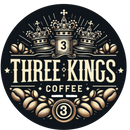Coffee is more than just a beverage; it’s a global phenomenon, a daily ritual, and a source of comfort and inspiration for millions. Whether you’re a seasoned coffee aficionado or a casual drinker, there’s always something new to discover about this beloved drink. Let’s dive into the fascinating world of coffee and explore its journey from bean to cup.
The Origins of Coffee
The story of coffee begins in the ancient coffee forests of Ethiopia. According to legend, a goat herder named Kaldi discovered the potential of these beloved beans when he noticed his goats becoming energetic after eating the berries from a certain tree. This discovery eventually led to the cultivation and trade of coffee, spreading its popularity across the Arabian Peninsula and beyond.
The Coffee Plant
Coffee comes from the Coffea plant, which produces cherries containing the coffee beans we know and love. There are two main species of coffee plants: Arabica and Robusta. Arabica beans are known for their smooth, complex flavors and are generally considered higher quality. Robusta beans, on the other hand, have a stronger, more bitter taste and are often used in espresso blends for their rich crema.
From Harvest to Roast
The journey of coffee from the plant to your cup involves several crucial steps:
- Harvesting: Coffee cherries are typically hand-picked to ensure only the ripest cherries are selected.
- Processing: The cherries are processed to remove the beans. This can be done using the dry method (sun-drying the cherries) or the wet method (fermenting and washing the cherries).
- Drying: The beans are dried to reduce moisture content, which is essential for proper storage and roasting.
- Milling: The dried beans are hulled to remove the parchment layer, polished, and graded by size and weight.
- Roasting: Roasting transforms the green coffee beans into the aromatic, flavorful beans we use to brew coffee. The roast level (light, medium, or dark) significantly impacts the flavor profile of the coffee.
Brewing the Perfect Cup
Brewing coffee is both an art and a science. Here are some popular brewing methods:
- Drip Coffee: A classic method where hot water drips through a filter containing ground coffee.
- French Press: Coarse coffee grounds are steeped in hot water, then separated by pressing a plunger through a mesh filter.
- Espresso: Hot water is forced through finely-ground coffee at high pressure, producing a concentrated shot of coffee.
- Pour-Over: Hot water is poured over coffee grounds in a circular motion, allowing for precise control over the brewing process.
- Cold Brew: Coffee grounds are steeped in cold water for an extended period, resulting in a smooth, less acidic coffee.
Exploring Coffee Trends
The coffee world is constantly evolving, with new trends and innovations emerging regularly. Some of the latest trends include:
- Specialty Coffee: Focused on high-quality beans and unique flavor profiles, often sourced from single-origin farms.
- Sustainable Practices: Emphasizing eco-friendly and ethical sourcing, from farm to cup.
- Cold Brew and Nitro Coffee: Cold brew coffee has gained popularity for its smooth taste, and nitro coffee adds a creamy texture with a hint of sweetness.
- Customizable Drinks: Offering a variety of flavors, milk alternatives, and add-ons to cater to individual preferences1.
The Coffee Community
One of the most beautiful aspects of coffee is its ability to bring people together. Whether it’s a morning ritual, a social gathering, or a moment of solitude, coffee has a unique way of connecting us. Join the global coffee community by exploring local coffee shops, participating in coffee tastings, and sharing your coffee experiences with others.

